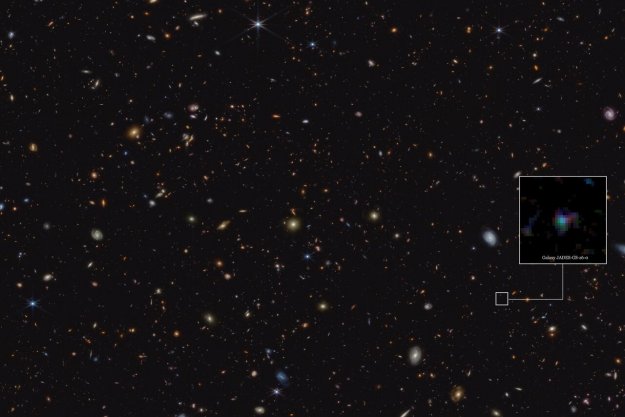The James Webb Space Telescope might be grabbing all the headlines right now, but NASA has big plans for another space-based telescope too: The Nancy Grace Roman Space Telescope. Set to launch in 2027, Roman will survey the sky in the infrared wavelength to learn about big topics in cosmology like dark energy as well as perform a census of exoplanets. Now, NASA has shared more information about the kinds of planets that Roman could find, including the possibility it could take the first image of a Jupiter-like world.
Roman will be armed with a coronagraph instrument which is designed to block out light from very bright objects like stars to allow observation of the planets around them, opening the possibility of directly imaging planets. This is exciting because most exoplanets discovered now are detected indirectly, by looking at the star they orbit. Being able to image an exoplanet directly can give more information, for example about the planet’s atmosphere.

“We will be able to image worlds in visible light using the Roman Coronagraph,” said Rob Zellem, an astronomer at NASA’s Jet Propulsion Laboratory (JPL) who is working on Roman, in a statement. “Doing so from space will help us see smaller, older, and colder planets than direct imaging usually reveals, bringing us a giant leap closer to imaging planets like Earth.”
This also opens up more possibilities in the type of planets that could be discovered. Most methods used to detect exoplanets currently find large, young planets which glow brightly, and are typically located far from their host star. These factors make them easier to spot using current methods. But Roman’s coronagraph could spot rocky, Earth-sized planets, perhaps even within the habitable zone of sun-like stars. In addition, it could view planets in the visible light wavelength as opposed to the infrared wavelength more commonly used now.
“To image Earth-like planets, we’ll need 10,000 times better performance than today’s instruments provide,” said Vanessa Bailey, an astronomer at JPL and the instrument technologist for the Roman Coronagraph. “The Coronagraph Instrument will perform several hundred times better than current instruments, so we will be able to see Jupiter-like planets that are more than 100 million times fainter than their host stars.”
Editors' Recommendations
- See planets being born in new images from the Very Large Telescope
- James Webb finds that rocky planets could form in extreme radiation environment
- Watch NASA’s capsule with asteroid samples hurtling to Earth
- Scientists explain cosmic ‘question mark’ spotted by Webb space telescope
- What comes after Webb? NASA’s next-generation planet-hunting telescope




